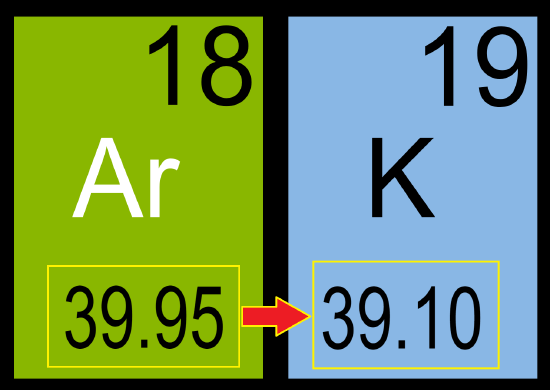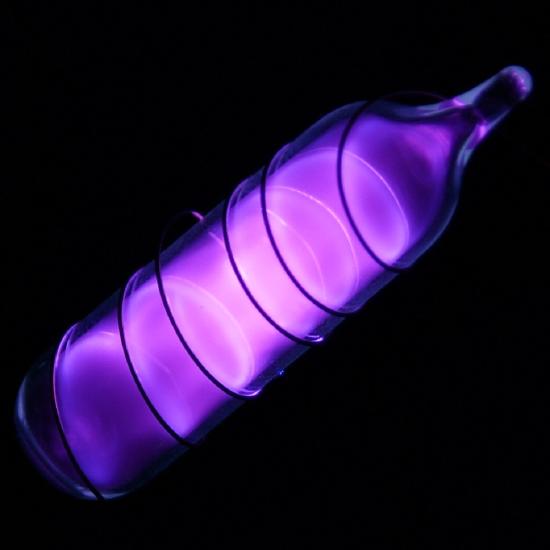4.5: Exceptions to the Periodic Law
- Page ID
- 49305
In the process of constructing the first periodic table, Mendeleev encountered several situations where the properties of elements were incompatible with the positions they would be forced to occupy in order of increasing atomic weight. In such a case, Mendeleev chose to emphasize the properties, because in the 1870s it was difficult to determine atomic weights accurately. He assumed that some atomic weights were in error and that ordering of elements ought to be changed to agree with chemical behavior.
One example occurs when looking at the valence of potassium(K) and argon(Ar). While potassium has a smaller atomic weight than argon(39.10 vs. 39.95) the valence properties of potassium suggest that it should follow argon in the periodic table. Mendeleev did not have to contend with this because argon, one of the noble gases, had not been discovered in 1872, but it illustrates the difficulty nicely. There is a break in the regular sequence of valences of the first 24 elements when we come to K and Ar.

The alkali metal has a smaller atomic weight than the noble gas and appears before the noble gas in the sequence of atomic weights. All other alkali metals immediately follow noble gases (they have slightly larger atomic weights). Unless we make an exception to the order of increasing atomic weight for Ar and K, the periodic table would contain a strange anomaly. One of the elements in the vertical column of noble gases would be the extremely reactive silver metal pictured below, Potassium (K). Likewise, the reactive group of alkali metals would contain the gas Argon, pictured below, which is not a metal and is very unreactive.

Mendeleev’s assumption that more accurate atomic weight determinations would eliminate situations such as we have just described has turned out to be incorrect. The atomic weights used for K before Ar are modern, highly accurate values, but they still predict the wrong order for Ar and K. The same problem occurs in the case of Co and Ni and of Te and I. Apparently atomic weight, although related to chemical behavior, is not as fundamental as Mendeleev and other early developers of the periodic table thought.


